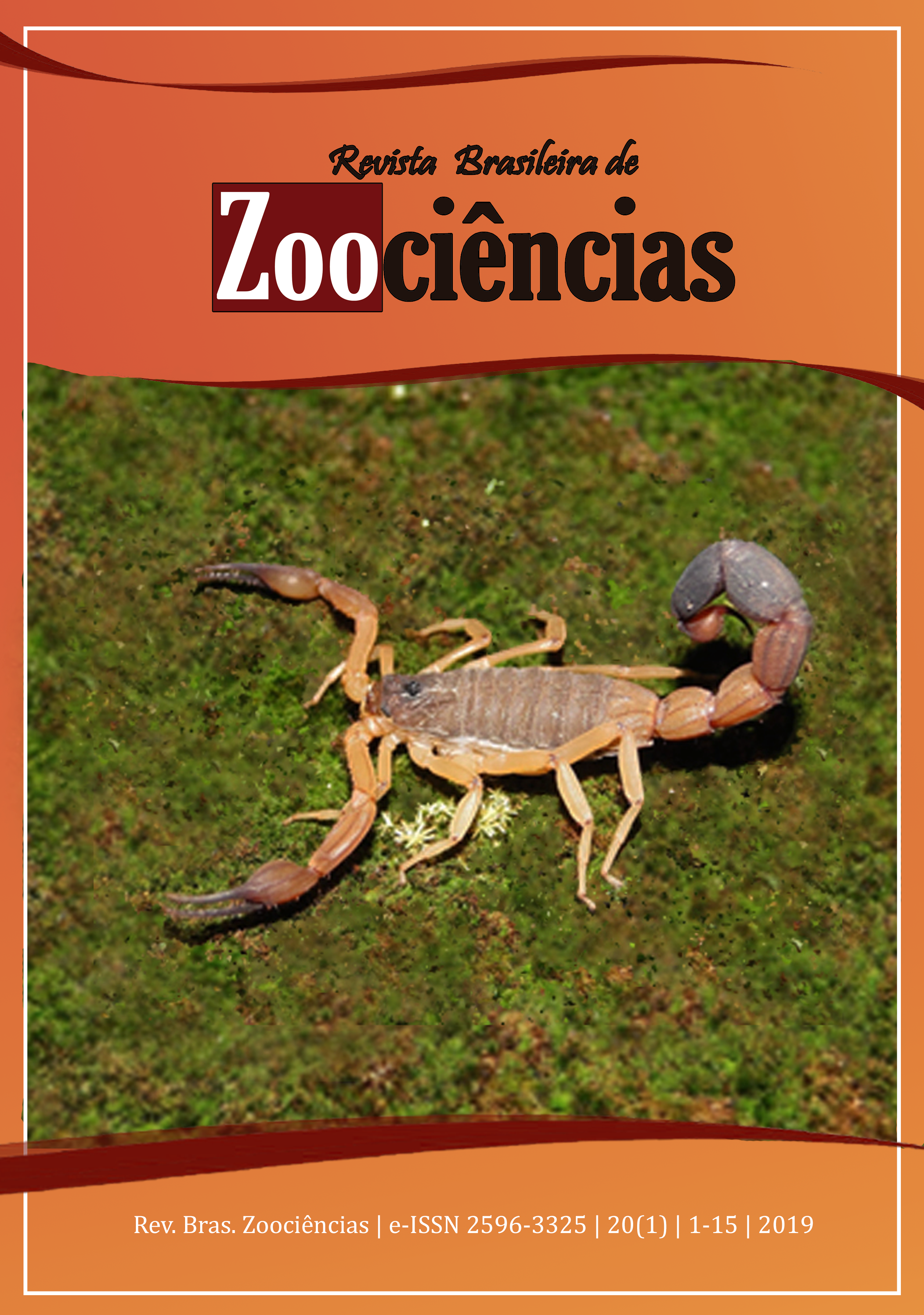Morphological and Morphometric Characterization of Trypanosomes in Leptodactylus lineatus and Osteocephalus sp. (Anura) from Brazilian Midwest
DOI:
https://doi.org/10.34019/2596-3325.2019.v20.24785Palavras-chave:
Amazon Forest, Anurans, Cerrado, TrypanosomaResumo
The objective of this study was to evaluate parasitism caused by trypanosomes in naturally infected anurans from Brazilian Midwest and characterize trypanosomes by morphology and morphometry. Anurans were captured from margins of the Guaporé River in transition areas between Cerrado and Rain Forest. Blood samples of 16 anurans species were obtained by cardiac puncture and analyzed for the presence of hemoparasites. Trypanosomes were found infecting two anuran species, Leptodactylus lineatus (Leptodactylidae) and Osteocephalus sp. (Hylidae). It was observed high prevalence of trypanosomes (100%; N = 3) in L. lineatus, with intensity of infection of 9.9 × 102 parasites/ml. In Osteocephalus sp. the prevalence of trypanosomes was comparatively lower (36%; N = 4 from 11), however, the intensity of infection was higher 2.16 × 103 parasites/ml. Morphological variation related to body length and width of bloodstream trypomastigotes were observed in different host species and between individual hosts of the same species. Polymorphic trypanosomes were separated into morphotypes and classified as elongated or short trypanosomes. Trypanosomes infecting L. lineatus are elongated with slender or broad body and trypanosomes infecting Osteocephalus sp. presented a short body with broad posterior extremity. The parasitological analyses and morphological characterizations presented in this study contribute to the knowledge of diversity of trypanosomes from neotropical anurans.



